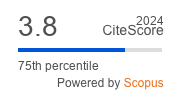Article | Open Access
How the Presence of Newly Arrived Migrants Challenges Urban Spaces: Three Perspectives from Recent Literature
| Views: | 3215 | | | Downloads: | 2017 |
Abstract: This article explores the notion of arrival spaces in the recent urban studies literature, and it outlines three emerging perspectives on their role and the associated processes and complexities. Recently, within changing migratory trajectories, the dimension of arrival has gained increasing relevance, and scholars have discussed the growing complexity underpinning it. Within this framework, some contributions reflect on the role of arrival spaces, which currently represent a rapidly changing research subject. However, by the term ‘arrival space,’ authors refer to various types of space, and the article argues that a clearer reference to the spatial dimension of arrival is needed. Spaces are contexts where different actors interact and intervene in the city, and their understanding represents a preliminary step for future research. In this sense, this contribution aims to unpack the previous decade’s debate on arrival spaces. It outlines three main perspectives: The first discusses the role of trans-local contexts, working as nodes in international migration networks; the second follows the debate on arrival neighborhoods; the third suggests that arrival spaces may be defined as all those parts of the urban fabric with which newcomers interact at the moment of arrival. Finally, drawing from this review, the article underlines that arrival spaces are not only specialized areas with migrant newcomers’ concentration, but they may also be ordinary urban spaces that temporarily work for arrival. Hence, future research should further deepen this perspective and more explicitly investigate the relation of arrival spaces to the city and its actors.
Keywords: arrival infrastructure; arrival spaces; migration flows; temporariness; urban space
Published:
© Martina Bovo. This is an open access article distributed under the terms of the Creative Commons Attribution 4.0 license (http://creativecommons.org/licenses/by/4.0), which permits any use, distribution, and reproduction of the work without further permission provided the original author(s) and source are credited.


